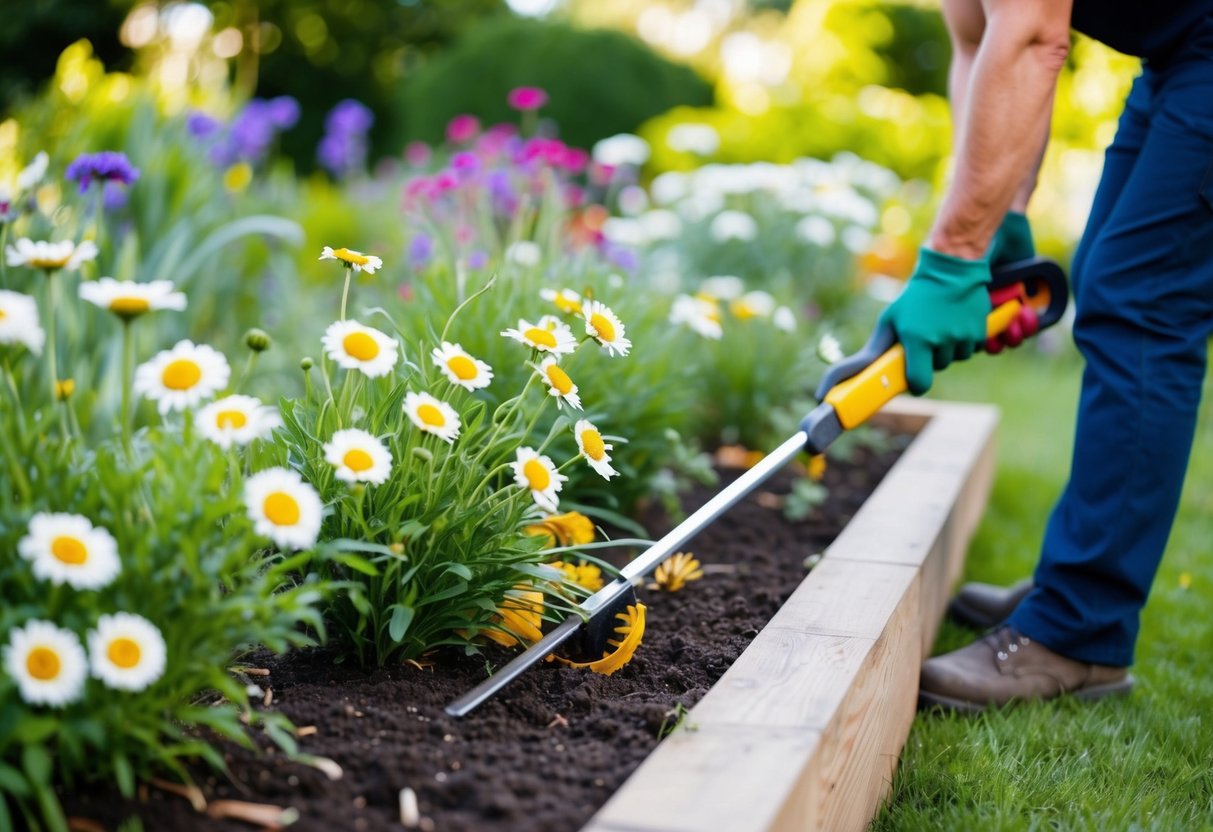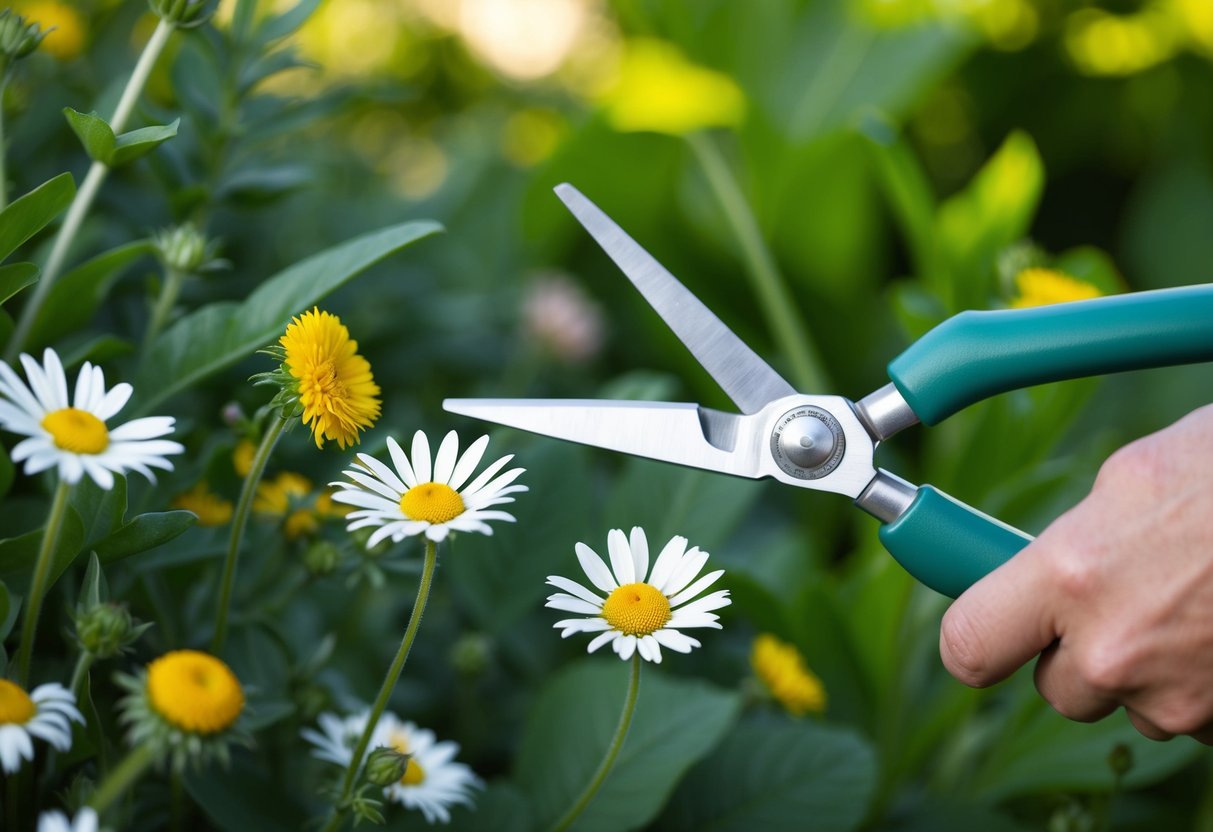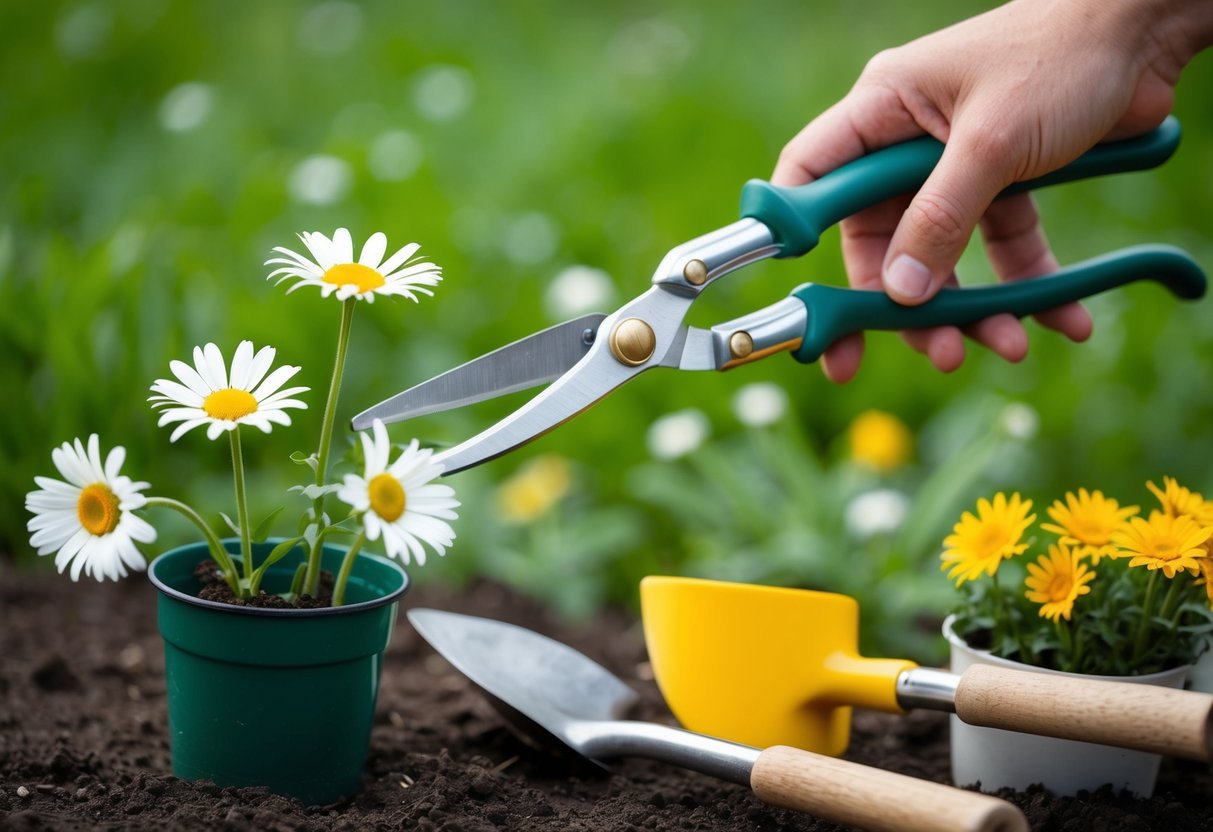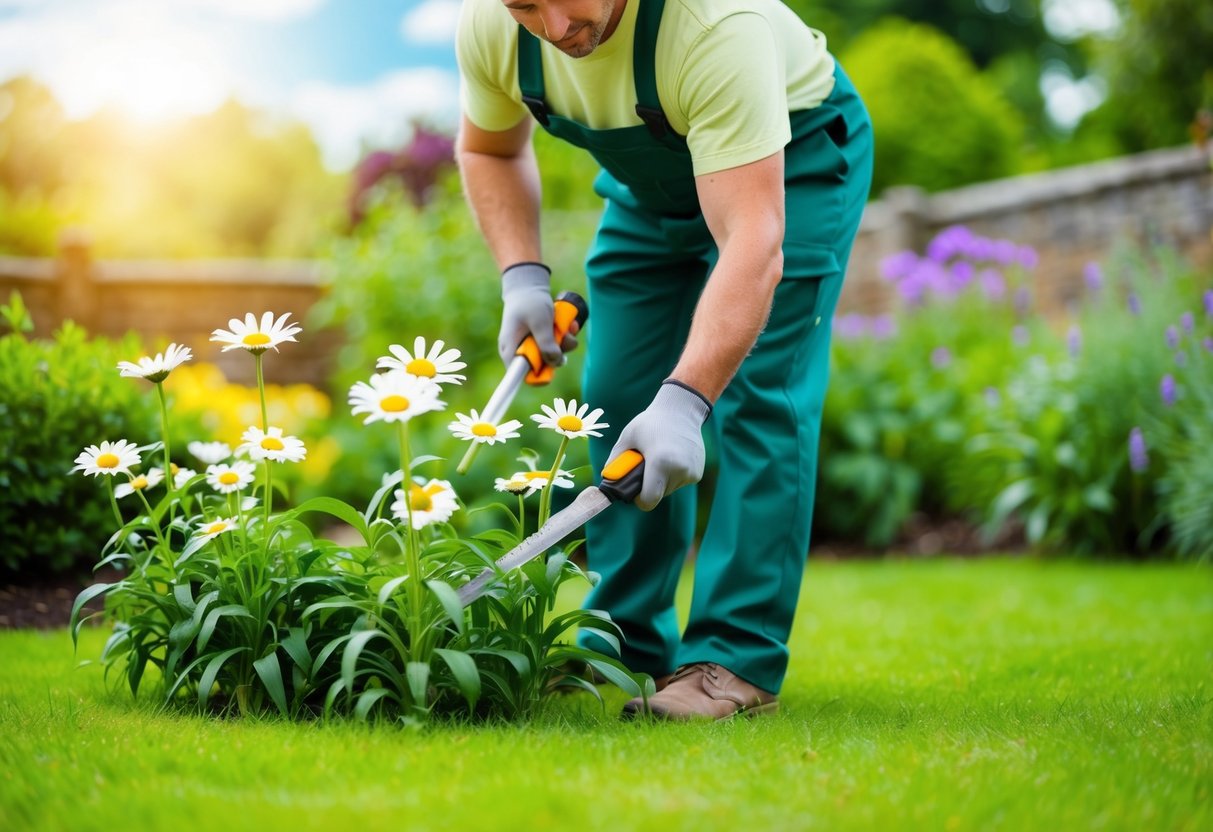Should I Cut Back Daisies After Flowering? Gardening Tips
Are your daisies looking a bit tired after their flowering season? You might wonder if it’s time to cut them back. The short answer is yes, trimming your daisies after they bloom is a good idea to encourage healthy growth and more flowers.
Pruning, including deadheading the old blooms, helps the plant focus its energy on producing vibrant flowers for the next season.

When you cut back the wilting flower heads and trim the plant, you’re not just tidying up your garden. This simple task promotes bushier growth and increases your plant’s flowering potential.
If you’re looking for more tips on managing your daisies, you can find helpful advice in articles like this one on what to do with daisies after they bloom.
If you’re new to gardening or have been caring for daisies for a while, understanding the benefits of pruning can make a big difference in your garden’s success. Taking the time to care for your daisies properly not only enhances their beauty but also supports their long-term health. Dive into the full article to explore more about keeping your daisies in top shape!
Understanding Daisy Varieties

Daisies are part of the vibrant Asteraceae family and come in various types, each with unique characteristics. Some are ideal for colorful gardens, while others are perfect for bouquets. Knowing the differences helps you care for them properly and make the best choice for your garden.
Shasta and Painted Daisies
Shasta daisies are well-loved for their classic white petals and sunny yellow centers. These perennials grow in clumps and are great for creating border displays in your garden. They typically bloom from early summer to early fall. Regular deadheading can encourage more blooms.
Shasta daisies love full sun and well-drained soil, making them a resilient choice if you’re looking for a low-maintenance plant.
Painted daisies, also known as Tanacetum coccineum, are noted for their bright pink, red, or white flowers. These daisies can reach up to 2 feet tall and are wonderful for cutting gardens. Painted daisies have a strong fragrance which can repel insects.
If you’re planning a garden that attracts butterflies but not pests, these daisies could be the ones you need.
Ox-eye and Bellis Perennis
Ox-eye daisies might be what you picture when you think of wildflowers. These are tall daisies with white petals and yellow centers, blooming from late spring to summer. Often regarded as a natural beauty, they self-seed easily and can become invasive, so it’s important to keep them contained if you don’t want them overtaking your garden.
Bellis perennis, also known as the common daisy or lawn daisy, is a smaller variety often found in lawns and meadows. These daisies have a charming, classic look and can bloom nearly year-round in mild climates. They are hardy, able to withstand various weather conditions, and can even be used as ground cover.
Montauk Daisies
Montauk daisies, also called Nippon daisy, bloom later in the season, usually in late summer to early fall. This makes them unique and valuable for extending garden color when other plants have faded. They have white petals with yellow centers, similar to shasta daisies, but can tolerate harsher coastal conditions.
These daisies prefer sandy soil and full sun exposure, making them suitable for seaside gardens. Being relatively pest-resistant, Montauk daisies need minimal care other than occasional pruning to maintain their shape and prevent leggy growth.
Best Practices for Daisy Care

Taking good care of daisies involves ensuring they have the right amount of water, nutrients, sunlight, and proper soil conditions. You’ll want to focus on these areas to keep your daisies healthy and blooming.
Watering and Nutrient Requirements
Daisies need consistent moisture, especially during the growing season. Water them deeply once a week, making sure the soil doesn’t dry out. However, avoid overwatering as it can lead to root rot.
In terms of nutrients, fertilize your daisies with a balanced fertilizer in the spring. This helps promote healthy growth and flowering.
You can apply a slow-release granular fertilizer or use a liquid feed every few weeks.
Just remember to stop fertilizing as fall approaches, letting the plant prepare for dormancy naturally.
Sunlight and Temperature Preferences
Daisies thrive in full sunlight, needing at least six hours of direct sun each day. Place them in a spot where they receive ample light for optimal blooming.
In terms of temperature, daisies prefer mild conditions. They tolerate temperatures between 65°F and 75°F (18°C and 24°C) well. During summer, some afternoon shade can prevent overheating.
In cooler climates, mulching can help protect roots during colder months. This way, your daisies will be happier and healthier throughout the seasons.
Soil and Mulching Techniques
For daisies, well-drained soil is crucial. Sandy or loamy soils work well since they prevent water from accumulating around the roots. If your garden soil is heavy, consider adding organic matter like compost to improve drainage.
Mulching around the base of the daisies helps retain soil moisture and regulate temperature. Use organic mulch such as shredded bark or leaf mold for the best results. Apply a layer 2-3 inches thick, ensuring it doesn’t cover the stems.
By providing these conditions, your daisies will have the support they need to grow and bloom beautifully.
Pruning Daisies for Optimal Growth

Pruning your daisies is essential to promote healthy blooms and bushy growth. By deadheading regularly and using the right tools at the correct times, you can encourage new flowers and foliage. This helps keep your daisy plants vibrant and strong throughout the growing season.
The Importance of Deadheading
Deadheading is one of the best ways to keep your daisies looking fresh. By removing spent flower heads, you can prevent the plant from wasting energy on seed production. Instead, it focuses on developing new flower buds.
This process encourages bushier growth and more blooms, making your garden look lively.
Use clean pruning shears to snip off dead flowers just above the next set of leaves. Regular deadheading, especially during blooming periods, helps keep your daisies thriving.
When to Prune Your Daisies
Timing is crucial for successful pruning. Late spring and early summer are ideal times. This is when your daisy plants start showing new growth. Taking action during these months helps shape the plant and promotes healthy foliage.
Consider the Chelsea Chop technique in late spring. This method involves cutting back about a third of the plant, encouraging thicker growth and more flowers.
In late summer, you can trim your daisies after flowering to prepare for the next season. Through each stage, attentive pruning fosters robust and long-lasting plants.
Using the Right Tools for Pruning
Using the correct tools is vital for clean cuts and healthy plants. A sharp pair of pruning shears works best for most pruning tasks. They are small enough for detailed work yet strong enough for thicker stems.
Make sure your tools are clean to avoid spreading diseases. Cut at an angle to help water run off, preventing rot. You might find long-handled pruners useful for larger plants.
Regularly cleaning and sharpening your tools ensures consistent, precise cuts. Efficient pruning keeps your daisies in great shape, allowing them to show off in all their colorful glory.
Propagation and Transplanting Tips

When it comes to propagating and transplanting daisies, there are a few key strategies. Dividing overgrown clumps, rooting new cuttings, and knowing the best times for transplanting are essential for healthy growth and strong plants.
Dividing Overgrown Clumps
If your daisies are turning into a tangled mass, it’s time to divide them. Start by cutting back the foliage and stems. This prepares the plant for dividing.
Next, dig about a few inches around the plant to loosen the clump from the soil. Gently separate the clumps into smaller sections by hand, making sure each section has roots attached.
Replant these sections in well-drained soil, spacing them far enough apart to allow growth. Water them thoroughly after replanting.
Dividing is a great way to manage overgrown daisies and ensure each plant gets the nutrients it needs.
Rooting New Cuttings
To root new cuttings, start by selecting healthy stems from the parent plant. Cut a few inches below a leaf node. Remove any leaves from the lower part of the stem. This prevents excess moisture loss.
Place the stem in a pot filled with moist soil or a propagation medium. Keep the soil consistently damp but not soggy.
Position the pot in indirect sunlight. Within a few weeks, roots should develop.
Once roots form, you can transplant cuttings into the ground. This method provides a simple way to grow new daisies from existing plants, allowing them to thrive in your garden.
Best Times for Transplanting Daisies
Transplanting daisies at the right time helps them adjust and grow better. Spring and early autumn are ideal because the temperatures are mild and the soil is warm.
Before transplanting, prepare the new site by ensuring the soil drains well and is enriched with compost or fertilizer.
Gently dig around the daisy to prevent root damage when moving it. Carefully replant it in the new location, covering the roots thoroughly with soil.
Water the plant well after transplanting to help it settle. Timing is crucial, so choose cooler months to minimize transplant shock and maximize success.
Maintaining Daisy Health throughout Seasons

Keeping your daisies healthy all year requires attention to their unique needs in different seasons. This includes preventing and managing common problems, preparing them for winter, and ensuring they bloom beautifully every year.
Managing Common Problems
Daisies can face issues like yellowing leaves or pest infestations. Yellow leaves often mean your plant needs more air circulation or better drainage. Ensure your daisies get ample sunlight, as light requirements are crucial for their health.
To resolve pest issues, regularly inspect for common bugs like aphids. If you spot them, gently wash the leaves with water or use a mild insecticide.
Shaping your daisy plants with garden shears will keep them tidy and encourage growth. Good plant health reduces the risk of diseases and uneven blooms.
Winterizing Your Daisy Plants
Preparing your daisies for winter is vital to protect them from harsh weather. Start by cutting daisy stems back to about 1-2 inches above the soil. This protects the plant base from freezing temperatures.
Apply a layer of mulch or compost around the roots for added winter protection. This provides insulation and keeps the roots warm.
Doing this maintains lower maintenance requirements for your plants throughout winter.
Opt for hardy varieties like leucanthemum if you live in colder regions. These types are better suited for surviving through frost.
Promoting Blooms Year After Year
To ensure your daisies bloom beautifully each year, you should consistently remove spent blooms through deadheading. This helps the plant direct energy towards new growth rather than seed production.
During spring and early summer, consider cutting daisies back to promote flowering. Regular pruning encourages a more abundant flower size and attracts pollinators, which benefit overall plant health.
Fertilizing your daisies after pruning gives them necessary nutrients. Use a balanced water-soluble fertilizer to promote lush, vibrant blooms. By focusing on year-round care, your daisies will continuously thrive and enhance your garden.







